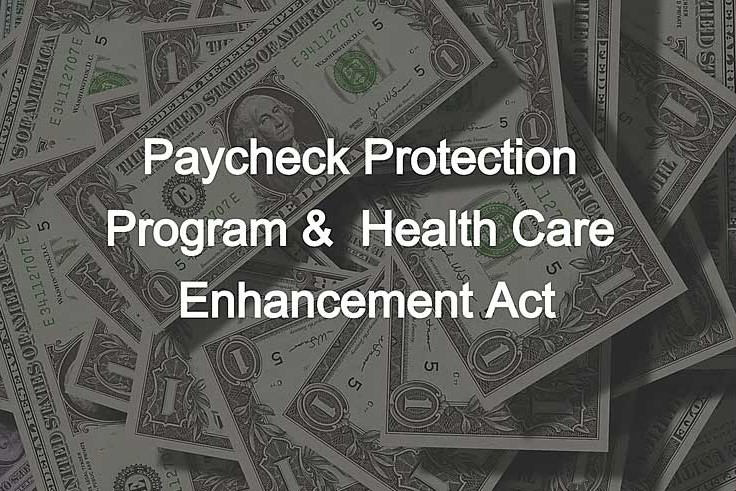
Summary of the initial Paycheck Protection Program (part of CARES Act)
On March 27th, 2020, the Coronavirus Aid, Relief, and Economic Security (CARES) Act was signed into law. As part of this Act, the Paycheck Protection Program (PPP) was established, setting aside $349 billion to help small businesses cover payroll, benefits, utilities, and rent & mortgage expenses. Distribution of the funds, via loan, was to be administered by the Small Business Association (SBA). PPP loans are forgivable, up to 100% of the total amount, if primarily used to cover the types of expenses discussed above during the eight-week period post loan funding.
On April 3rd, the SBA began issuing loans and, on April 16th, the SBA reported it was unable to accept new applications for the Paycheck Protection Program based on available appropriations funding (i.e., all $349 billion had been provided to businesses). On April 21st, it was announced that the Senate had passed a bill providing additional funding, the Paycheck Protection Program & Health Care Enhancement (PPP & HCE) Act.
Summary of the new Paycheck Protection Program & Health Care Enhancement Act
The PPP & HCE Act is a stand-alone act providing an economic relief package worth
$484 billion. Of this total, $310 billion is set aside for the SBA for PPP loans, with hospitals and healthcare providers, expansion of COVID-19 testing, and the Emergency Economic Injury Disaster Loan program receiving the majority of the remaining $174 billion in funding.
After passage by the US House of Representatives and signature by the President, the act promises to provide additional funding available for the PPP, as established by the CARES Act (you can find more information on the PPP here). Even though the PPP & HCE is a separate act, from a small business perspective, it appears to be a continuation of the original PPP from the CARES Act. The additional $310 billion would bring the total funding available for PPP loans to $659 billion.
How to prepare for the Paycheck Protection Program & Health Care Enhancement Act
If you have already applied through a lender as part of the CARES Act PPP, you should confirm with your lender that your existing application will be submitted once the SBA begins accepting new PPP loan applications. Many banks have continued to process applications up to the point of submission to the SBA, despite the initial funding of
$349 billion having been exhausted. This means these applications may be “first-in-line” when the SBA accepts the next round of applications.
If you have not yet applied through your lender as part of CARES Act PPP, we recommend that you reach out to your bank or another SBA lending institution to begin the process of applying to the PPP. Based on our experience, you will need various supporting payroll documentation that you can obtain from your payroll provider. Additionally, confirm with your bank whether they are a participating lender for the CARES Act PPP. If they are not, ask for references of participating banks. The U.S. Department of the Treasury provides a tool to find eligible lenders (you can access the website here). Additionally, an overview of the program and the information needed to apply can be found here (Byline Bank is a valued partner of MHW and is a top ten SBA lender nationally)
April 16, 2020
Byline Bank Paycheck Protection Program Guide
Byline Bank has compiled a list of useful information in preparation for applying for a Paycheck Protection Program (PPP) loan, which may be helpful to your small business as you…
0 Comments1 Minute